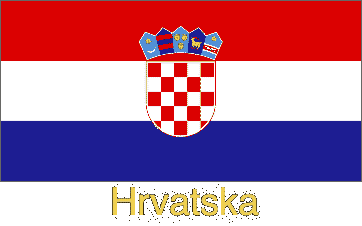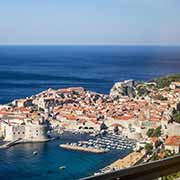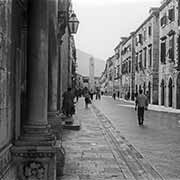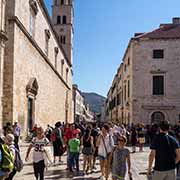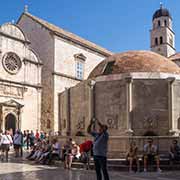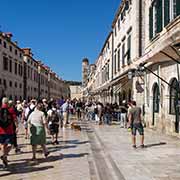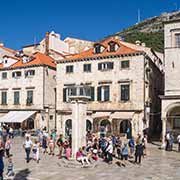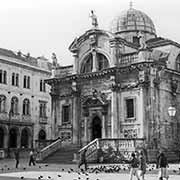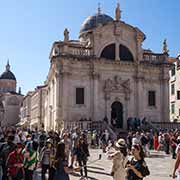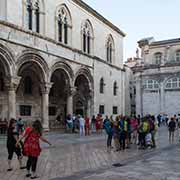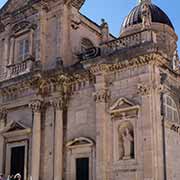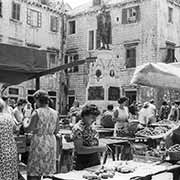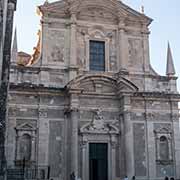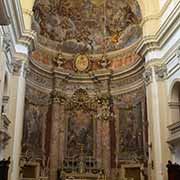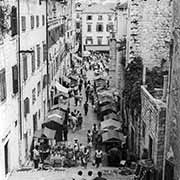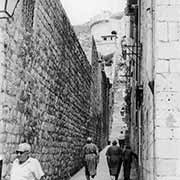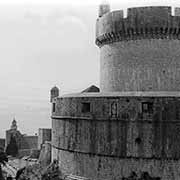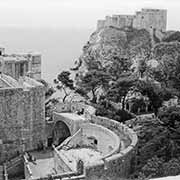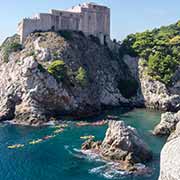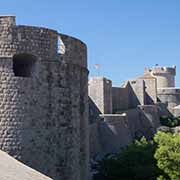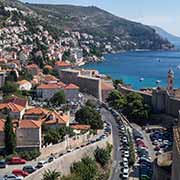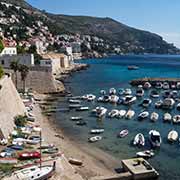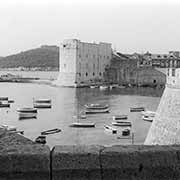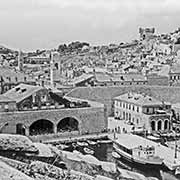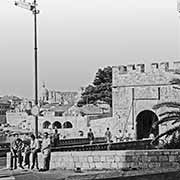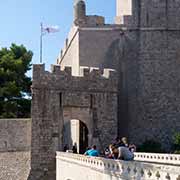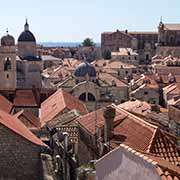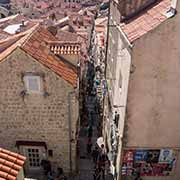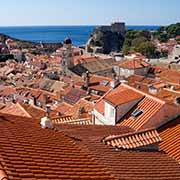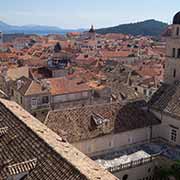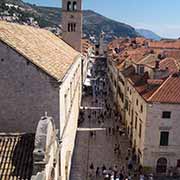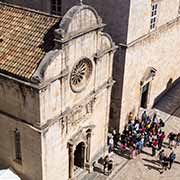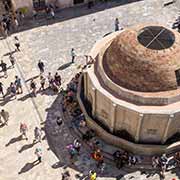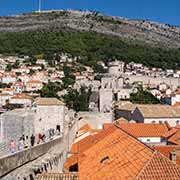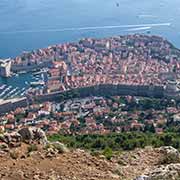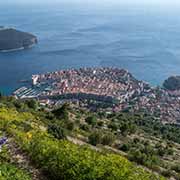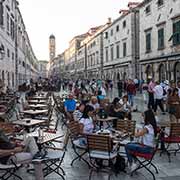Photos of Dubrovnik, Croatia
Dubrovnik, the historic Ragusa Republic
The old city of Dubrovnik, in southern Dalmatia, is a fortified town on the UNESCO list of World Heritage Sites in recognition of its outstanding medieval architecture. It is now one of the most prominent tourist destinations in the Mediterranean. It was founded as "Ragusa" in the 7th century by refugees from Epidaurum, 15 kilometres south, a town that Avar and Slavic invaders had destroyed at the time.
you may then send it as a postcard if you wish.
Ragusa came under Byzantine and later Venetian protection, and it ruled itself between the 14th and 19th centuries as a free state: the maritime Republic of Ragusa. During the 15th and 16th centuries, it became notable for its wealth. An earthquake almost destroyed the city in 1667, and thousands were killed. The Sponza and the Rector's Palace were the only buildings that survived. The city was reconstructed in the baroque style that remains intact to this day; the Church of Saint Blaise, Ragusa-Dubrovnik's patron saint, was built in 1715 on the foundations of the badly damaged Romanesque medieval church.
Like other Mediterranean ports, Dubrovnik began a steady decline as trade diminished in the eastern Mediterranean. On 27 May 1806, French forces occupied the Republic of Ragusa, and in 1810 they issued a proclamation abolishing the Republic. They added its territory to the French Empire's client state, the Napoleonic Kingdom of Italy, and, with Istria and Dalmatia, formed the newly created French Illyrian Provinces. Three years later, the Ragusans rose and, with British forces, forced the French to surrender. The Austrian Empire sent a force "to help the Ragusans", but their real aim was to replace the French and occupy all of Dalmatia, which they did - and never kept their promises to restore the independence of Ragusa.
In the 20th century Dubrovnik, now part of Croatia in Yugoslavia, started to attract tourists, especially after 1979 when it joined the UNESCO list of World Heritage Sites. The Adriatic Highway, connecting it with Rijeka, was opened in 1965. In 1991 Croatia (and Slovenia) declared independence, and on 1 October 1991, the Yugoslav People's Army (JNA), composed primarily of Serbs, attacked Dubrovnik, resulting in a siege that lasted for seven months. Artillery attacks damaged 56% of its buildings to some degree: the historic walled city sustained 650 hits by artillery rounds, and 114 civilians were killed.
Between 1995 and 1999, the damage caused by the shelling of the Old Town was repaired in the original style. General Pavle Strugar, who coordinated the attack on the city, was sentenced to a seven-and-a-half-year prison term by the International Criminal Tribunal for the former Yugoslavia for his role in the attack - considered a war crime. But since then, Dubrovnik has become overwhelmed by tourists; I took the black-and-white photos on this page in 1965 and 1967: the people were almost all locals; the colour photos in 2018 show that there are now only tourists!


